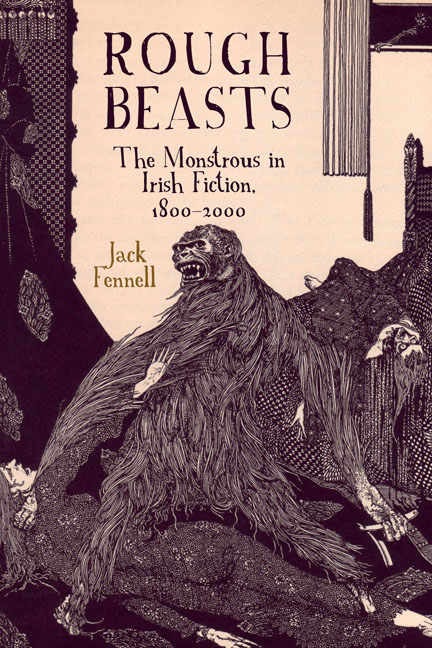Book contents
- Frontmatter
- Contents
- Acknowledgements
- 1 Introduction: In Defence of Fear
- 2 We Dare Not Go A-Hunting: Fairies, Deep Time, and the Irish Weird
- 3 Harbingers of Hunger: Famine, Cannibalism, and Hunger-Demons
- 4 From Lore to Law: Malevolent Magic and Spiritual Warfare
- 5 Ghosts, Narrative, and Noumenal Reality
- 6 Just Sign Here: Faustian Pacts, Demons, and Chaos
- 7 The Undead Generations: Zombies, Vampires, and the Corporeal Undead
- 8 Breeding Breaks Out: Shape-Shifters, Cryptids, and Cunning Animals
- 9 Haunted Spaces and Monstrous Lairs
- 10 Conclusions
- Bibliography
- Index
1 - Introduction: In Defence of Fear
- Frontmatter
- Contents
- Acknowledgements
- 1 Introduction: In Defence of Fear
- 2 We Dare Not Go A-Hunting: Fairies, Deep Time, and the Irish Weird
- 3 Harbingers of Hunger: Famine, Cannibalism, and Hunger-Demons
- 4 From Lore to Law: Malevolent Magic and Spiritual Warfare
- 5 Ghosts, Narrative, and Noumenal Reality
- 6 Just Sign Here: Faustian Pacts, Demons, and Chaos
- 7 The Undead Generations: Zombies, Vampires, and the Corporeal Undead
- 8 Breeding Breaks Out: Shape-Shifters, Cryptids, and Cunning Animals
- 9 Haunted Spaces and Monstrous Lairs
- 10 Conclusions
- Bibliography
- Index
Summary
The central argument I will put forth in this book is that horror is a literary genre characterised to a large extent by a specific non-normative relationship to history. In my previous book, Irish Science Fiction, I differentiated the ‘big three’ non-realist genres by arguing that (to summarise/paraphrase) fantasy ignores accepted history, science fiction pretends that it is history, and horror ends history. The monster is my specific focus here, because the monster is the one who actually does the history-ending work.
For the present study, I have settled on a thematic structure rather than a chronological one: each chapter approaches the central core argument from an angle determined by the specificities of a particular character type. As Allen S. Weiss puts it in the fourth of his Ten Theses on Monsters and Monstrosity, “The logic of monsters is one of particulars, not essences. Each monster exists in a class by itself” (124). The distinctiveness of each demands an in-depth analysis that is only possible if they are considered separately: werewolves, vampires, folkloric/ fictional witches, and ghosts all represent ruptures of historical causality, but they rupture that causality in different ways. I will also analyse how monstrous folklore was utilised by Irish authors of Gothic and horror literature. It is not my intention to be encyclopaedic, to advance a specifically ‘Irish’ theory of monstrosity, or to try to pre-empt disagreement and debate. Gothic studies and horror studies are already well-populated fields, as is the comparatively new field of monster studies, and Ireland is well-represented in each one. This book is my contribution to those fields, not an attempt to stake a particular claim on any of them.
My survey range begins in the year 1800, because the year is significant in terms of both Irish history and literary production. As Elizabeth Tilley puts it, the Act of Union “reduced Ireland's intellectual class”, as the demotion of Dublin from a capital city to a “provincial backwater” triggered a “mini-exodus” of writers, artists and their patrons from Ireland to England, while the attendant extension of British copyright law to Ireland put an end to the reprint industry that had kept the Irish publishing sector financially solvent (Tilley 2011, 464–5).
- Type
- Chapter
- Information
- Rough BeastsThe Monstrous in Irish Fiction, 1800–</I>2000, pp. 1 - 22Publisher: Liverpool University PressPrint publication year: 2019



